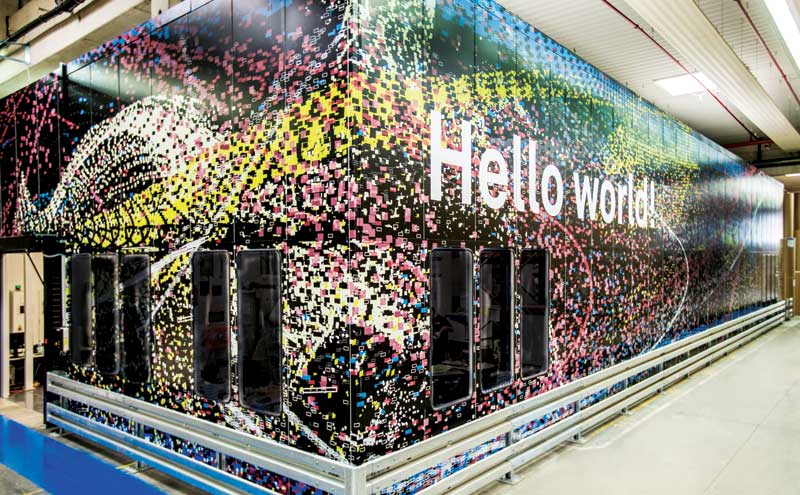
As inkjet printing of wallpaper has been possible for several years, wallcoverings have represented stronger potential than flooring.
Photo courtesy Interprint
Investing in integration
Many of the respondents to InPrint’s survey (26 per cent) were industrial technology companies, including developers, integrators and manufacturers of printheads and inks.
“These digital suppliers have a lot of experience in what works and what doesn’t
in the decor market,” says Hanley. “They are ready to support new models.”
The rest of the survey’s participants were industrial production companies (19 per cent), material manufacturers (13 per cent), retailers (five per cent), designers (three per cent) and ‘others’ (34 per cent).
For these companies, integrating inkjet technology into the production of floorcoverings and wallcoverings will take significant time and investment, but they are optimistic about the results. Nearly 25 per cent of them predicted inkjet-printed decor will experience a growth rate of up to five per cent, more than 38 per cent forecast a rate of between 10 and 15 per cent and, finally, more than 36 per cent supported a rate of 15 per cent or more.
“Growth rates only normalize when the market reaches a threshold volume, which on the whole it has not done yet,” says Hanley. “Rates will be higher before and lower later.”
Walls vs. floors
When comparing walls to floors, customization is more easily achievable for wallcoverings, as they do not face the same functional challenges of toughness and durability and, for that matter, their costs per area are lower. Further, inkjet printing of wallpaper has been possible for many shops for several years now. So, wallcoverings have seemingly represented stronger potential for inkjet than flooring.
“Wallpaper’s popularity reflects publicity around technologies like durable aqueous ‘latex’ inks, as well as successful retail applications,” says Hanley.
Nonetheless, the potential for inkjet-printed flooring and laminates was regarded as significant by the respondents to InPrint’s survey. The technical challenges, supply chain complexity and production demands are greater, but so is the overall scale of the market. Once inkjet technology starts to make inroads, the data suggests, the volume of flooring it handles could easily outpace wallpaper production in the medium term, particularly as floorcovering suppliers recognize its value in reducing multiple stages of production, enhancing efficiency and accelerating the speed of bringing new products to market.
Short-run vs. industrial-capacity
InPrint’s research also suggests there are, broadly, two types of markets for inkjet printing of decor: (a) a short-run industrial market, served by existing flatbed and roll-to-roll (RTR) inkjet printers, and (b) an industrial-capacity market focused on customized, single-pass, in-line inkjet production, including direct-to-surface printing.
The survey suggests the short-run market has the strongest potential as a key opportunity. The individualized, frequently changeable environments that are achievable with digital inkjet printing tend to require localized production and are less likely to be part of a mass production line. The customer base includes commercial, retail and hospitality venues, including restaurants and hotels.
There is also a considerable amount of investment in direct-to-surface inkjet printing. In flooring, this technology provides a high-quality, lower-cost alternative to other decoration methods, e.g. by simulating both the esthetic and haptic traits of wood. If the ‘feel’ of the print matches its visual appearance, the perceived value is higher. With such specialized applications, however, this higher value is countered by smaller market potential.
“Direct-to-surface haptic inkjet printing is still in early phases of development,” says Hanley. “It can work as a substitute for expensive wood and will probably get bigger over time.”
That said, inkjet printing of laminates for flooring is also helpful for shorter runs. The technology offers flexibility that may appeal even to larger manufacturers.





